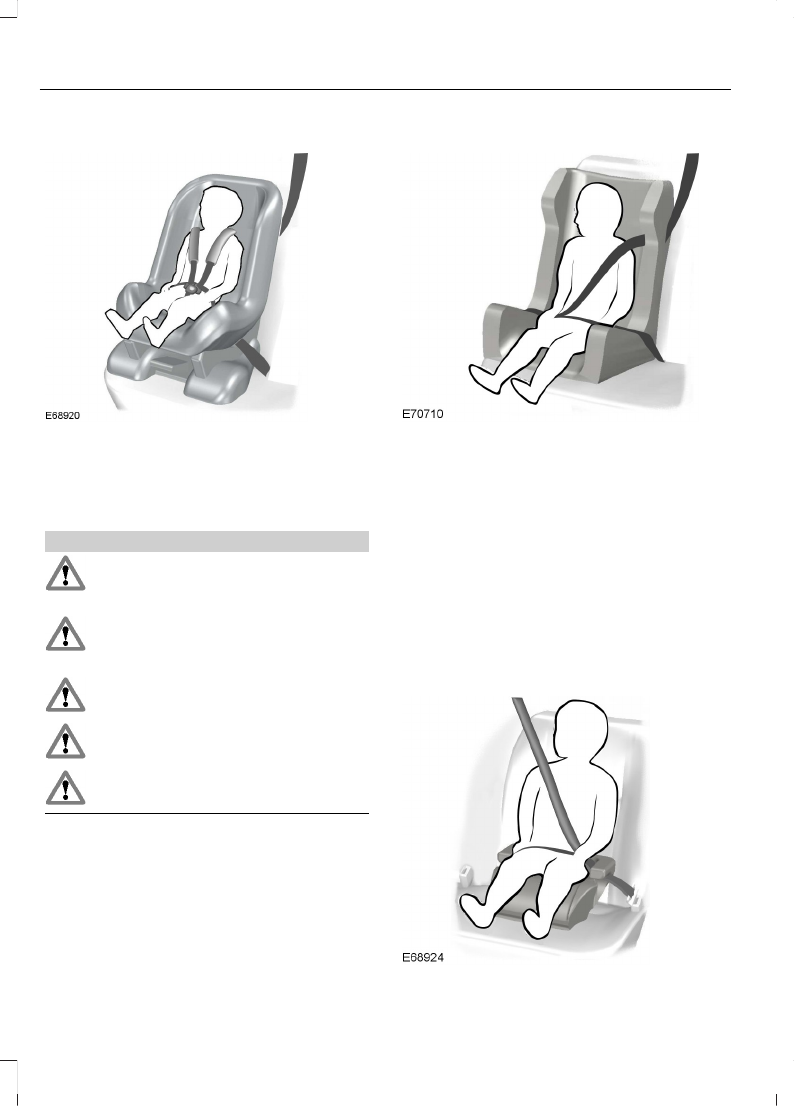Operation Manual
Table Of Contents
- Copyright ©
- Introduction
- At a Glance
- Child Safety
- Safety Belts
- Supplementary Restraints System
- Keys and Remote Controls
- MyKey™
- Locks
- Security
- Steering Wheel
- Wipers and Washers
- Lighting
- Windows and Mirrors
- Instrument Cluster
- Information Displays
- Climate Control
- Seats
- Auxiliary Power Points
- Storage Compartments
- Starting and Stopping the Engine
- Unique Driving Characteristics
- Fuel and Refueling
- Transmission
- Brakes
- Stability Control
- Parking Aids
- Cruise Control
- Driving Aids
- Load Carrying
- Towing
- Driving Hints
- Roadside Emergencies
- Fuses
- Maintenance
- General Information
- Opening and Closing the Hood
- Under Hood Overview
- Under Hood Overview
- Under Hood Overview
- Engine Oil Dipstick
- Engine Oil Dipstick
- Engine Oil Dipstick
- Engine Oil Check
- Engine Coolant Check
- Brake and Clutch Fluid Check
- Washer Fluid Check
- Changing the 12V Battery
- Checking the Wiper Blades
- Changing the Wiper Blades
- Adjusting the Headlamps
- Removing a Headlamp
- Changing a Bulb
- Bulb Specification Chart
- Technical Specifications
- Vehicle Care
- Wheels and Tires
- Capacities and Specifications
- Audio System
- Navigation
- SYNC™
- Appendices

Child Safety Seat
Secure children that weigh between 29
and 40 pounds (13 and 18 kilograms) in a
child safety seat (Group 1) on the rear seat.
Booster Seats
WARNINGS
Do not install a booster seat or a
booster cushion with only the lap
strap of the safety belt.
Do not install a booster seat or a
booster cushion with a safety belt
that is slack or twisted.
Do not put the safety belt under your
child’s arm or behind their back.
Do not use pillows, books or towels
to boost your child’s height.
Make sure that your children sit in an
upright position.
Note: When using a child seat on a rear
seat, make sure that the child seat rests
tightly against the vehicle seat. It may be
necessary to lift or remove the head
restraint. See Head Restraints (page 83).
Booster Seat (Group 2)
Secure children that weigh more than 33
pounds (15 kilograms) but are less than 59
inches (150 centimeters) tall in a booster
seat or a booster cushion.
We recommend that you use a booster
seat that combines a cushion with a
backrest instead of a booster cushion only.
The raised seating position will allow you
to position the shoulder strap of the adult
safety belt over the center of your child’s
shoulder and the lap strap tightly across
their hips.
Booster Cushion (Group 3)
16
B-MAX (CB2) Vehicles Built From: 25-06-2012, Vehicles Built Up To: 31-12-2013
Child Safety










